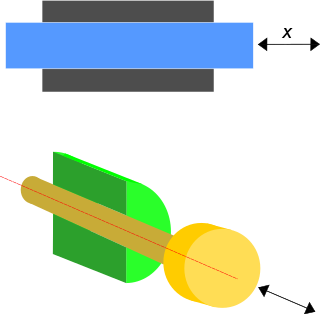Prismatic_joint
Prismatic joint
Kinematic pair which constrains bodies to sliding along an axis without rotating
A prismatic joint is a one-degree-of-freedom kinematic pair[1] which constrains the motion of two bodies to sliding along a common axis, without rotation; for this reason it is often called a slider (as in the slider-crank linkage) or a sliding pair. They are often utilized in hydraulic and pneumatic cylinders.[2]
This article needs additional citations for verification. (November 2023) |

A prismatic joint can be formed with a polygonal cross-section to resist rotation. Examples of this include the dovetail joint and linear bearings.